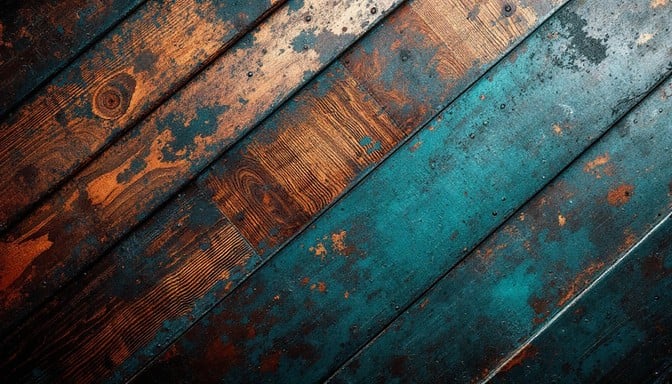Patina on wood is the natural finish that develops on wood surfaces over time, resulting from exposure to sunlight, air, moisture, and human touch. This gradual evolution creates a richness in color, texture, and depth that modern finishes can’t replicate. It can manifest as a soft sheen, deeper hues, or subtle grain changes that add character to the wood.
How Patina Forms
Patina forms through a combination of environmental interactions:
- Oxidation: Wood molecules react with their environment over time.
- UV Rays: Sunlight, particularly ultraviolet rays, significantly contributes to the wood’s surface weathering and lightening.
- Environmental Elements: Minerals, air, rain, dust, and even oils from human hands interact with the wood, causing subtle shifts in color and texture.
The longer wood is exposed to these elements, the more complex and profound the patina becomes, akin to nature adding layers to a story.

Why Patina is Important for Value
Patina is crucial, especially in the world of antiques and vintage furniture, for several reasons:
- Authenticity and Age: Patina is a prime indicator of genuineness. A natural, even patina proves an item’s surface has been undisturbed for decades, signifying its age and endurance. It acts as a “badge of authenticity,” being incredibly difficult to convincingly fake, thus confirming a piece’s originality.
- Character and History: Patina tells a piece’s story. Worn edges, subtle color changes, and unique marks (like old nail holes) all speak to its journey through time. This “visual evidence of wear, use, and weathering” imparts a deep sense of history and character that new wood simply lacks, connecting us to the lives associated with these items.
- Aesthetics: Patina often results in a unique and beautiful appearance that is highly sought after. It can transform wood with warm amber tones, silvery grays, or reddish glows, depending on the wood species and exposure. This visual richness creates a one-of-a-kind finish that is aesthetically pleasing and adds sophistication.
- Dimensional Stability: As timber ages and develops patina, it can become more dimensionally stable, meaning it’s less prone to warping, shrinking, or swelling with seasonal changes. This can enhance a piece’s practical value and longevity.
- Collector’s Desire: Patina is highly desirable for collectors. Pieces with a “fine patina” are often more valuable and sought after than those heavily restored or lacking these signs of age. Removing a patina, especially from antique furniture, can significantly diminish its value by erasing its history and character.
In essence, patina is more than just a surface change; it’s a testament to time, use, and a piece of wood’s unique journey, all contributing to its allure and value.
So, bottomline – refinishing is not always the best answer. Get professional input before you reach for the sanding paper!
Contact page here
